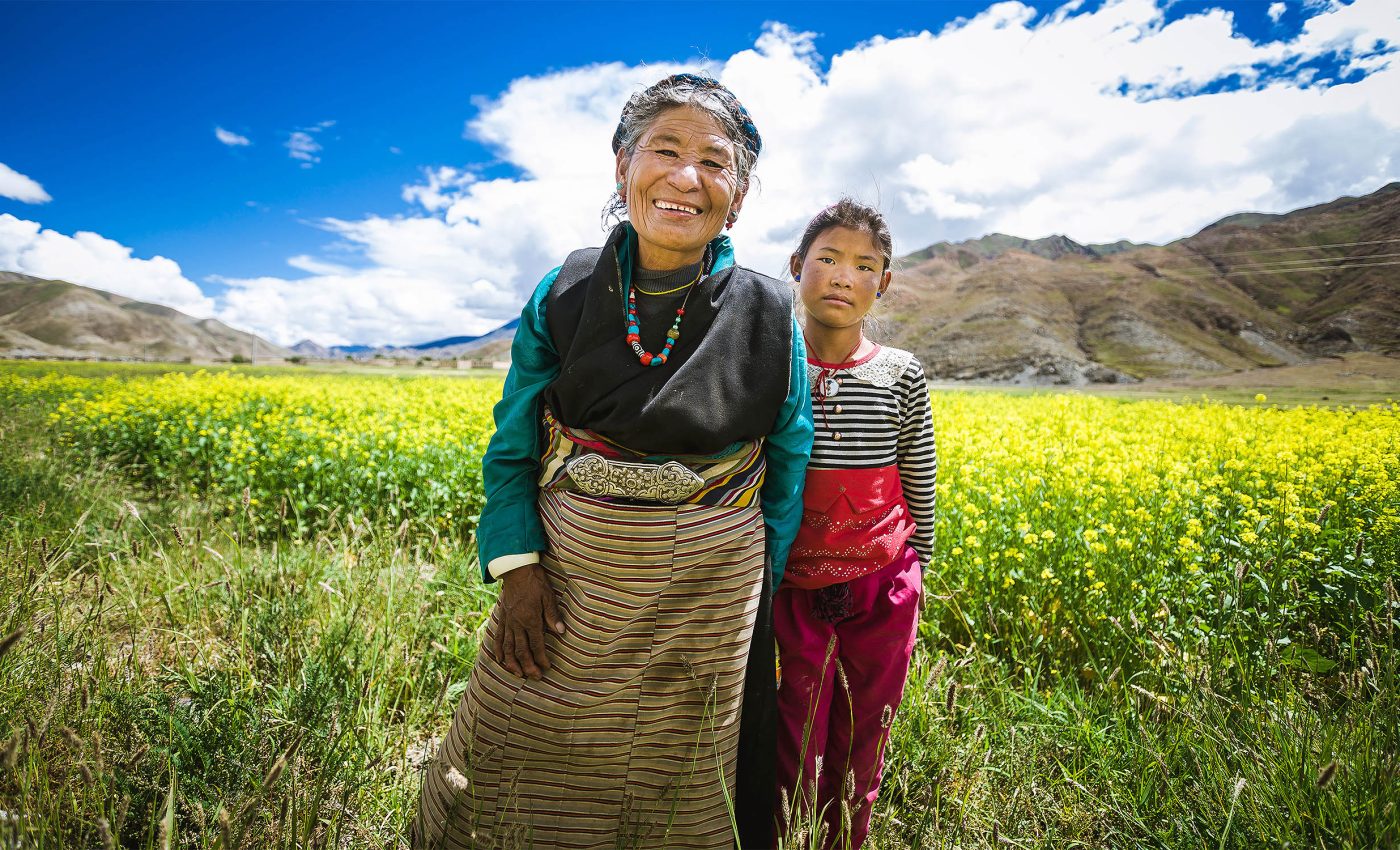
Tibetan women have quickly evolved to thrive in low oxygen and high altitudes
Imagine, if you can, a place where every lungful of air doesn’t quite fulfill your body’s needs. Yet, despite such challenging conditions, Tibetan women residing on the high Tibetan Plateau with low oxygen have been surviving and thriving for over 10,000 years.
Now that’s what you call an art of survival.
Tibetan survival code
The credit for unraveling this mystery goes to a team led by Cynthia Beall, a Distinguished University Professor Emerita at Case Western Reserve University.
The study uncovers how Tibetan women’s physiological adaptability allows them to reproduce efficiently in such an oxygen-poor environment — an environment that would wind most of us in no time.
Beall asserts that these findings not only highlight the impressive resilience of Tibetan women but also offer valuable insights into how humans might adapt in extreme environments.
These insights could potentially guide us to respond to future environmental challenges and shed light on the pathobiology of people suffering from illnesses related to hypoxia (low oxygen levels) at all altitudes.
“Understanding how populations like these adapt gives us a better grasp of the processes of human evolution,” notes Beall.
Oxygen delivery traits in Tibetan
The focused study revolved around 417 Tibetan women aged between 46 to 86, who live between 12,000 and 14,000 feet above sea level in Upper Mustang, Nepal.
The research team comprised of Beall and her colleagues collected data on the women’s reproductive histories, physiological measurements, DNA samples, and social factors.
Their goal was to comprehend how oxygen delivery traits amidst high-altitude hypoxia influence the number of live births — a key metric to measure evolutionary fitness.
Breathing in thin air
Beall and her team made an interesting discovery. The women who had borne the most children exhibited unique blood and heart traits that enhanced their bodies’ oxygen-delivery efficiency.
These women reported higher oxygen saturation, leading to efficient oxygen delivery to cells without increasing blood’s viscosity (thickness). And the less the blood’s viscosity, the less strain on the heart—quite a neat trick.
“This is a case of ongoing natural selection. Tibetan women have evolved in a way that balances the body’s oxygen needs without overworking the heart,” Beall affirms.
Tibetan adaptation to low oxygen
The remarkable physiological adaptations to low oxygen observed in Tibetan women are underpinned by unique genetic variations that have been naturally selected over millennia.
Studies utilizing genomic analysis have identified particular alleles associated with hemoglobin concentration and efficient oxygen uptake, which are less prevalent in populations residing at lower altitudes.
One significant gene, EPAS1, often dubbed the “super athlete gene,” has been highlighted for its role in enabling these populations to thrive in oxygen-scarce environments.
This genetic distinction is a testament to how human populations can evolve distinct biological traits in response to environmental pressures, thus contributing to our understanding of human genetic diversity and evolution.
Future research
Understanding these adaptations of Tibetan women to low oxygen environments not only enriches our comprehension of evolutionary biology but also holds promise for advancing medical science.
Insights from this research could be critical in developing treatments for conditions caused by hypoxia, such as chronic obstructive pulmonary disease (COPD) and certain cardiovascular ailments.
Moreover, studying genes like EPAS1 may spur innovations in enhancing athletic performance or aiding in the safe habitation of high-altitude regions.
Future research could explore how the integration of traditional Tibetan lifestyle practices with genetic predispositions contributes to these adaptive traits, potentially revealing further genetic markers involved in high-altitude survival.
Tibetan evolution and low oxygen
In 2019, Beall’s interdisciplinary research team, which includes Brian Hoit and Kingman Strohl from the Case Western Reserve School of Medicine and other U.S. and international researchers conducted fieldwork. They collaborated with local communities in the Nepal Himalayas and hired local women as research assistants.
The team’s investigation centered on a genetic trait likely inherited from the Denisovans, who lived in Siberia approximately 50,000 years ago.
The descendants of these Denisovans later migrated onto the Tibetan Plateau. The studied trait is a variant of the EPAS1 gene, unique to the indigenous populations of the Tibetan Plateau. It regulates hemoglobin concentration.
Other traits enhancing oxygen delivery, such as increased blood-flow to the lungs and wider heart ventricles, were also examined. These traits contributed to greater reproductive success.
Inspiration from Tibetan women
So, this is the story of how Tibetan women with their unique physiological traits have been showing us a live demonstration of survival, adaptation, and evolution in action for the last 10,000 years, despite having less oxygen around.
Isn’t it fascinating to see how the human body can adapt and evolve to survive and thrive with such low levels of oxygen? It indeed offers a glimpse into seeing evolution in action and the remarkable tenacity of the human spirit.
The study is published in the journal Proceedings of the National Academy of Sciences.
—–
Like what you read? Subscribe to our newsletter for engaging articles, exclusive content, and the latest updates.
Check us out on EarthSnap, a free app brought to you by Eric Ralls and Earth.com.
—–













